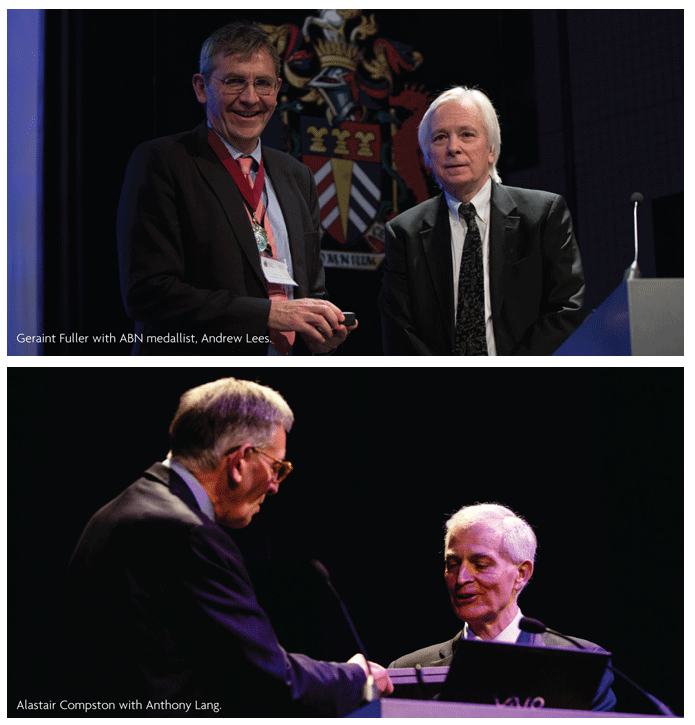

The Association of British Neurologists was welcomed to Harrogate for this year’s annual meeting. In his opening address as outgoing President of the association, Geraint Fuller informed us that the People of Yorkshire divided people into three types; those who come from Yorkshire, those who want to come from Yorkshire and those with no ambition at all!
The meeting started with a session on Neurosurgery. The treatment of Normal Pressure Hydrocephalus is always controversial, but Richard Edwards, from Bristol, gave some very compelling reasons why we should at least consider it. Caroline Hayhurst from Cardiff described the recent change in management of low grade gliomas, with the evidence that early aggressive treatment results in better long term outcomes than the traditional watch and wait. The session was rounded off by William Taylor from Glasgow, who told us when he would operate on himself.
The Holmes lecture from Prof Anthony Lang (Toronto, Canada), talked of his work on Corticobasal Syndrome, updating us on the underlying pathology, diagnosis and the hope for future treatments.
The ABN lecture took us through neurological infectious diseases, the challenges of Global health and the bureaucracy of research. Jeremy Farrar described his career, starting with Neurology, moving onto running an infectious disease unit in Vietnam for 18 years, before returning to the UK to take the helm of the Wellcome trust. He described how it could take 611 days to go from initially having a research question to enrolling your first patient in a clinical trial – a time scale that is too long to tackle modern day emerging health problems such as the Ebola epidemic.
The day was rounded off with parallel sessions. The advent of commissioning and the challenges and potential rewards this may bring were explored in an important managerial session.
The second day kicked off with an early start with several special interest groups holding parallel breakfast meetings.
The main sessions started with a review of ion channels, from a reminder of their structure and function from Dimitri Kullman, the psychiatric consequences of their disfunction from Belinda Lennox and neuromuscular channelopathies with Nicholas Davies.
The ABN medallist this year was Andrew Lees, with a citation from William Gibb. Prof Lees described his extensive career in movement disorders.
The day was finished off with the annual general meeting and more special interest groups. An excellent opportunity to either catch up with friends and colleagues who share your interest; or delve into an area of neurology that you have less experience with. I attended the Infectious Diseases special interest group and learned a great deal in excellent, interactive case discussions.
The final day saw the ever-popular case presentation competition, sponsored by ACNR. The standards were exceptionally high, with the prize going to Dr Alexander Rossor from London with his description of a case of Brown Violetta Van Laera syndrome – self treated with mushy peas! Look out for this case report in a future issue of ACNR.
The morning was rounded off with a teaching session in the Psychiatric borderlands of neurology, including the acutely agitated patient, Autism spectrum disorder and Psychosis.

The final sessions of the day were new themes for the ABN. Nicholas Fox and Robert Hadden told us how they would approach the patient with cognitive impairment and generalised sensorimotor neuropathy. Very didactic sessions, but always good to see how the experts do it. Just to prove that neurologists no longer rely solely on steroids the afternoon was concluded with a roundup of the treatments for MS (Neil Scolding), CIDP (Michael Lunn) and Myasthenia (Jon Sussman).
The meeting was brought to a close with the awarding of prizes: best platform presentation went to Dr Joseph Masters, best Audit to Dr Amy Edwards, case presentation competition to Dr Alexander Rossor and best poster to Dr Salwa Kamourieh.
All in all an excellent meeting in a wonderful setting.
ACNR 2015;15(4):26. Online 19/09/2015